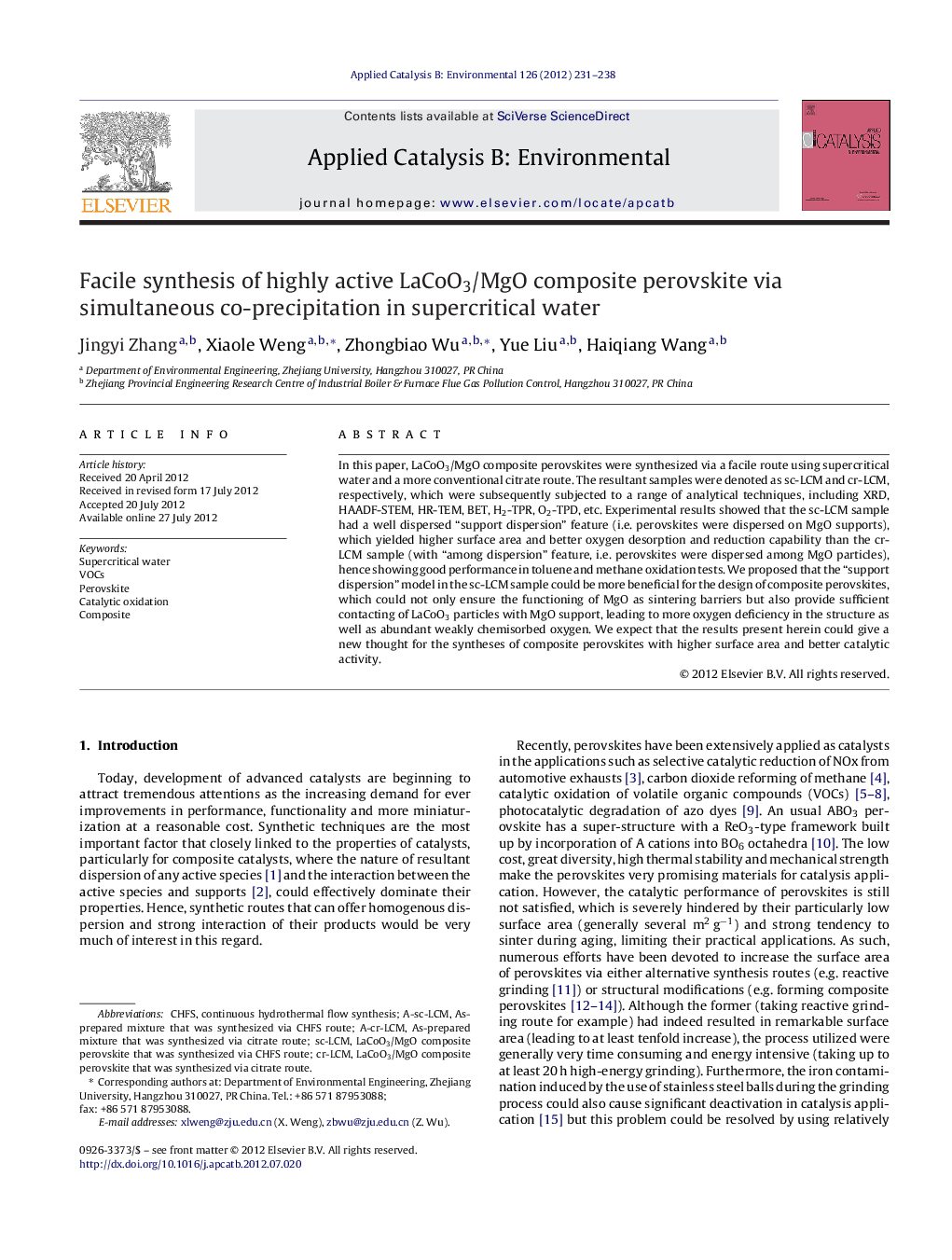| Article ID | Journal | Published Year | Pages | File Type |
|---|---|---|---|---|
| 46548 | Applied Catalysis B: Environmental | 2012 | 8 Pages |
In this paper, LaCoO3/MgO composite perovskites were synthesized via a facile route using supercritical water and a more conventional citrate route. The resultant samples were denoted as sc-LCM and cr-LCM, respectively, which were subsequently subjected to a range of analytical techniques, including XRD, HAADF-STEM, HR-TEM, BET, H2-TPR, O2-TPD, etc. Experimental results showed that the sc-LCM sample had a well dispersed “support dispersion” feature (i.e. perovskites were dispersed on MgO supports), which yielded higher surface area and better oxygen desorption and reduction capability than the cr-LCM sample (with “among dispersion” feature, i.e. perovskites were dispersed among MgO particles), hence showing good performance in toluene and methane oxidation tests. We proposed that the “support dispersion” model in the sc-LCM sample could be more beneficial for the design of composite perovskites, which could not only ensure the functioning of MgO as sintering barriers but also provide sufficient contacting of LaCoO3 particles with MgO support, leading to more oxygen deficiency in the structure as well as abundant weakly chemisorbed oxygen. We expect that the results present herein could give a new thought for the syntheses of composite perovskites with higher surface area and better catalytic activity.
Graphical abstractFigure optionsDownload full-size imageDownload as PowerPoint slideHighlights▸ A facile continuous hydrothermal flow synthesis route (CHFS) had been utilized. ▸ The CHFS made LaCoO3/MgO had high surface area. ▸ The CHFS made LaCoO3/MgO had good oxygen reduction and desorption capability. ▸ The LaCoO3/MgO show good performance in catalytic oxidation toluene and methane. ▸ A “support dispersion” model was proposed to design better composite perovskites.
